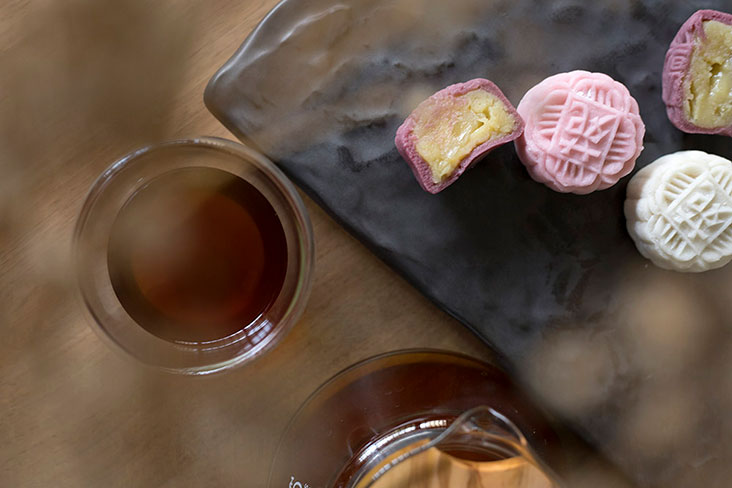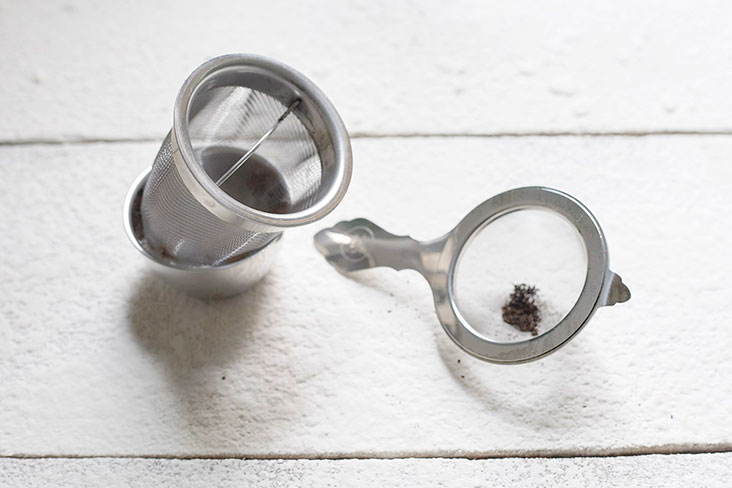KUALA LUMPUR, Sept 12 – Sometimes a session of Weekend Kitchen isn’t about cooking or baking. Maybe a full English breakfast feels too daunting. Risotto from scratch sounds heavenly... but it also sounds like too much work.
Who wants to stand over a hot stove on their day off, stirring and ladling broth for 20 minutes?
But who’s to say we have to smear our kitchen with various fats and oils? We don’t have to raid our pantries. We don’t have to dust our dining table with all-purpose flour and knead ourselves into a knot.
The weekend is meant to be relaxing. We get ideas of how best to unwind from the time of the year. Halloween might see us making some pumpkin spiced smoothies. Come Yuletide, and a colourful Christmas salad might be in order, especially after all the roast turkey and mashed potatoes.
And now?
‘Tis the season for mooncakes again... but what’s missing? No mooncake tasting is complete without some Chinese tea as per tradition.
That’s hardly a beverage requiring a recipe or time toiling away in the kitchen, you say. But who said anything about slogging and sweating? Even something as simple as brewing tea can be a calming act, a practice of mindfulness.
The best tea to pair with mooncakes, I find, is some delicate pu’er. Traditionally aged for decades, pu’er hails from the Yunnan province of China.
The process of controlled microbial fermentation and oxidation produces a deep, dark flavour – which is why pu’er is also considered a dark tea.
Ripe pu’er usually tastes intense, thanks to its accelerated fermentation of about 10-15 years. Raw pu’er, by contrast, has a wider range of flavours: from grassy and floral when young to smooth and earthy when aged. The ageing potential of the latter is remarkable, reaching upwards of 50-60 years!

Aged raw pu’er comes in the form of compressed tea cakes. This adds a layer of complexity to the proceedings; you’d need a pu’er “knife” or prying pick to flake off pieces of tea from the cake.


Every step adds to the calming of nerves: the boiling of water, the dislodging loose leaves from the tea cake, the steeping, the pouring of the final brew into cups to be sipped. The traditional Chinese tea ceremony may allow better appreciation of the season’s mooncakes but also of the moment itself.
Let’s spend the weekend fully engaged with it. The work week will return soon enough. Let’s not squander the precious time we have to ourselves.
Of course, there are other ways to derive pleasure from pu’er.
Take author Tim Ferriss’s Titanium Tea – “rocket fuel for the brain” which promises more sustained levels of energy without sudden hits of fatigue.
He steeps a blend of aged pu’er and green tea, turmeric and ginger in a pot before pouring into a cup and adding coconut oil. (Consider it a more meditative take on the infamous Bulletproof Coffee.)
Pu’er purists might be horrified but to each their own. Enjoy tea however you like it best. You do you.

If all else fails and you decide pu’er isn’t your cup of tea, why not try some filter-brewed coffee? In fact, for snowskin mooncakes which may have a subtler flavour, depending on the bakery and their recipe, I find a lighter roast drip coffee makes for a surprising match.
(How to brew coffee? Well, that’s another story for another weekend...)
But do try the pu’er first – taking the time on the weekend to brew tea slowly and relishing the experience. It might become a ritual that improves your mood and brightens up your day, long after the season for mooncakes has come and gone.
HOW TO BREW AGED RAW PU’ER TEA
Brewing Chinese teas, and especially pu’er, is typically a multi-step affair. The types of tea paraphernalia required can be a challenge to procure, both in terms of the dent to our wallets as well as sourcing those made from good, long-lasting materials.
This is where we cultivate the principle of “enough” – it’s making do with what we have and making the best of it, rather than endlessly chasing perfection.
For example, Chinese tea brewing etiquette would require the possession of a gaiwan – comprising a lid, a bowl and a saucer – to steep the tea leaves separate from the teapot you’d use to pour the finished brew.

I find it far more straightforward to use two basic teapots – the sort we’d find in any household – and a tea strainer, quite frankly. All manner of tea strainers can be used so long as they have a fine mesh.
So long as we remove the strainer with the tea leaves from the pot in between rounds of steeping, there’ll be no danger of over-steeping i.e. the harsh, astringent-tasting brews we often get at Chinese restaurants and daichows.
Equipment and Ingredients
A kettle (at least 1-litre capacity)
Filtered water
Aged raw pu’er cake
A pu’er “knife” or prying pick
Digital scale or tea measuring scoop
2 teapots
A fine mesh tea strainer
2-3 teacups (depending on number of people drinking)
A tea timer (such as the timer app on your smartphone)
Method
Fill the kettle with filtered water. Bring to a boil. While lower water temperatures are preferred for other teas, a water temperature of 100°C for pu’er is ideal.
Using a pu’er “knife” or prying pick, dislodge loose tea leaves from the compressed pu’er cake. We are looking at approximately 3-4 grams of tea leaves per 200 millitres of water; you can use either a sensitive digital scale (such as those used by baristas to brew coffee) or a tea measuring scoop for this.
Rinse your teapots and teacups in the boiling water. Place the appropriate amount of loose leaf pu’er into your first teapot. (This will be your brewing teapot.)
Pour the boiling water (return the kettle to a boil if necessary; again we’re looking at a water temperature of 100°C) into the brewing teapot.
Steep the tea for 5 seconds then immediately discard the water. This first steeping is called the “rinse” and eliminates any undesirable smaller pieces of broken tea leaves.
Place the brewing teapot on the digital scale. Bring the kettle to a quick boil again and pour the appropriate volume of boiling water (depending on how much tea is used and how many persons you’re serving) into the brewing teapot, over the rinsed tea leaves.
This will be the first proper brewing. Steep the tea leaves for about 10-20 seconds, then pour the brewed tea through the fine mesh tea strainer into the second teapot (i.e. the tasting teapot).
You can now pour tea from the tasting teapot into the teacups. Serve immediately, with mooncakes or on its own.
For subsequent brews, infuse for an extra 5-10 seconds each round. The flavour of each steep will change, which is part of the experience. Go for as many rounds as you desire until the flavour of tea has dissipated.
For more Weekend Kitchen stories and recipes, visit https://lifeforbeginners.com/weekend-kitchen/.






















